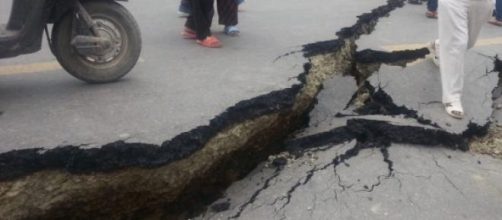In addition to the tragic death toll, the effect of the 7.8 magnitude earthquake that hit Nepal is now being seen in the geological field. Europe's Sentinel-1a radar satellite passed Nepal a few hours after the tragedy and transmitted images that indicate a severe damage to earth plates near Kathmandu. A broad land zone has been lifted upwards by 3 feet. These images are now being used to locate massively damaged areas and extend relief operations.
Effect on Himalayas
Researchers are cross referring post quake images to originals to produce an interferogram (a graph measuring total interference).
The preliminary data indicate an inch of fall in Everest's altitude. UNAVCO, a not for profit Geosciences research consortium, explains the phenomenon as a result of the slump of the crust in the northern area of epicentre where the strain was released. The consortium also opines that the lost altitude would be restored soon, as Everest is rising at the speed of 11 millimetre a year due to the ever going collision between the Indian and Eurasian tectonic plates.
What does the interferogram show?
The preliminary images of the interferogram show a roughly trapezoid shaped large area has been moved almost 3 feet vertically. The trapezoidal area is 75 miles long by 30 miles wide and just 10 kilometres away from the capital city Kathmandu.
The graph also shows that the Earthquake struck on a thrust fault that was angled only 10 degrees to the surface, but it shook nearly 6000 square miles of ground under its effect. Researchers are further analysing the Sentinel's data to study the possibility of any such incident in the future.
Possibility of aftershocks?
Identifying surface ruptures after an earthquake helps scientists analyse and predict the possibility of aftershocks, landslides and avalanches.
This data also helps governments declare non-rehabilitatable zones. Currently, the data indicates no signs of new ruptures in the earth; but a quake of massive 7.8 intensity leaves a possibility of 5.0 aftershocks for about five months. The Sentinel data suggest that the plates have not yet released all of their pent up strain in the Earthquake.
The fault seems to be broken midway and not cracked completely up to the surface. This interrupted fault leaves the possibility of further movement some strain that was built up prior to the earthquake. If any such movement happens (we can only pray it wouldn't) it would be a catastrophic incident.

